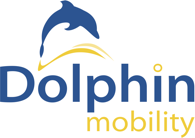Interesting
blog post from the Harvard Business Review.
A good example of a program that improves patient care, enhances the work environment, and reduces costs — all in an area of medical care that is often overlooked — is one that I lead: Intermountain Healthcare’s Integrated Safe Patient Handling Program. It focuses on reducing injuries to patients and employees due to transfers, lifting, and falls. Perhaps surprisingly, more injuries occur while lifting patients of average weight than overweight patients, because too often it’s assumed that the lifting will not be a problem.
Before we started the program in 2008, we did an analysis of our 22 hospitals and more than 100 clinics, which collectively had 33,000 employees. We found that between 2004 and 2007 the average number of employee injuries was 205 per year; 25 to 30 employees had some level of permanent disability. The average total cost was about $1.5 million per year.
Data on patient events or injuries likewise revealed a four-year average of 219 patient falls related to lift or transfer activities. Patient falls most often occurred in general medical-surgical units, inpatient rehabilitation, imaging, and orthopedics.
Employee injuries were more common than those to patients, in large part because the employees were doing the lifting or transferring. The extent of permanent disability for employees is a critical concern in an environment where nursing shortages are prevalent.
The Benefits
After one year of implementation, Intermountain’s employee injury rates were reduced by 42%, and patient falls related to transfer (as distinct from employee injuries) were reduced by 45%. By the end of the second year, we had seen a 41% reduction in employee injuries compared to the rates before the program was introduced, and a 49% reduction in patient falls related to lift and transfer activities.
We conservatively estimate that the cost savings from reducing employee injuries system-wide is $500,000 per year. The benefit in terms of safety for all concerned is far greater.
Key Elements
The multi-dimensional program design includes the following: well-trained employees with facility- and unit-level champions; mechanical lift and transfer devices, lateral-transfer air mattresses, gait belts, slide sheets, and slide boards; standardized protocols and tools; patient assessments; monitoring of outcomes; and, leadership support. More detail on the program and its implementation is available in an
April 2011 article in Nursing Management and a Joint Commission/OSHA monograph titled
“Improving Patient and Work Safety.”
The following were crucial to the program’s success: commitment from Intermountain’s Central Office leadership, which secured the resources for equipment purchases and approved the allocation of staff time; mid-level management support of policies; protocols and front-line participation to implement patient assessments; and, care-planning requirements.
The equipment purchases cost $700,000 in the first year and a total of $1.4 million over three years — with projected savings resulting in a potential payback in less than three years. Staff time was required to create the educational materials and conduct the needed training.
The team that developed and manages the program is led by the Central Office patient safety coordinator (in this case, me) and the employee health director, with team members from risk management, nursing leadership, education services, and front-line staff from each clinical program (such as surgical services, physical therapy, imaging, and nursing).
Patient Assessment
Patient assessment is conducted on admission, daily, and when there is a change of condition, using special nursing assessment tools that are embedded in existing charting (computer and paper). The assessment tools, including specific criteria, are contained in the
Joint Commission/OSHA monograph.
The assessment results in the assignment of one of the following safe patient handling categories: Maximum/Full Assist (two staff members and a mechanical lift device); Moderate/Partial Assist (one staff member and a powered lift device or a gait belt); Minimum/Standby (stand by to help if needed); and, Independent.
Education
Wall signs depicting the scoring tool with category criteria can be posted at the head of the patient’s bed and in staff rooms to provide visual reminders. Door-frame magnets and chart-back stickers are also available to alert staff to the appropriate “assist” level. Charting forms incorporate the tool in the medical record for seamless documentation.
Staff education includes hands-on classes as well as computer-based training for equipment, policy and assessment tools, and checklists for skills pass-off (the process in which a trained educator observes a new employee demonstrating safe use of a device).
Collection and Use of Data
Also crucial to this program’s success is the use of employee injury and patient fall reports. These are housed online — via the Intermountain intranet — on the reports’ portal. These reports allow data to be examined for the system, region, hospital, and department. Employee Health collects data from a standard post-injury questionnaire, which is used for local process improvement.
Ensuring the program’s initial and ongoing success requires more than mandates. Recognition and elimination of barriers are essential when instituting any change in organizational culture. Those barriers in this case included the following: funding for purchasing lift equipment; resources for education; new assessment tools, policies, procedures, and forms; and, changing the practices of health care workers.
System-wide programs such as this are not simple to design or implement, but the savings in terms of injuries avoided and costs reduced — as well as the prevention of permanent disabilities — are impressive. Maximizing opportunities for better care at a lower cost requires implementing programs such as this. Having been proven effective, it is now ready for widespread replication.




